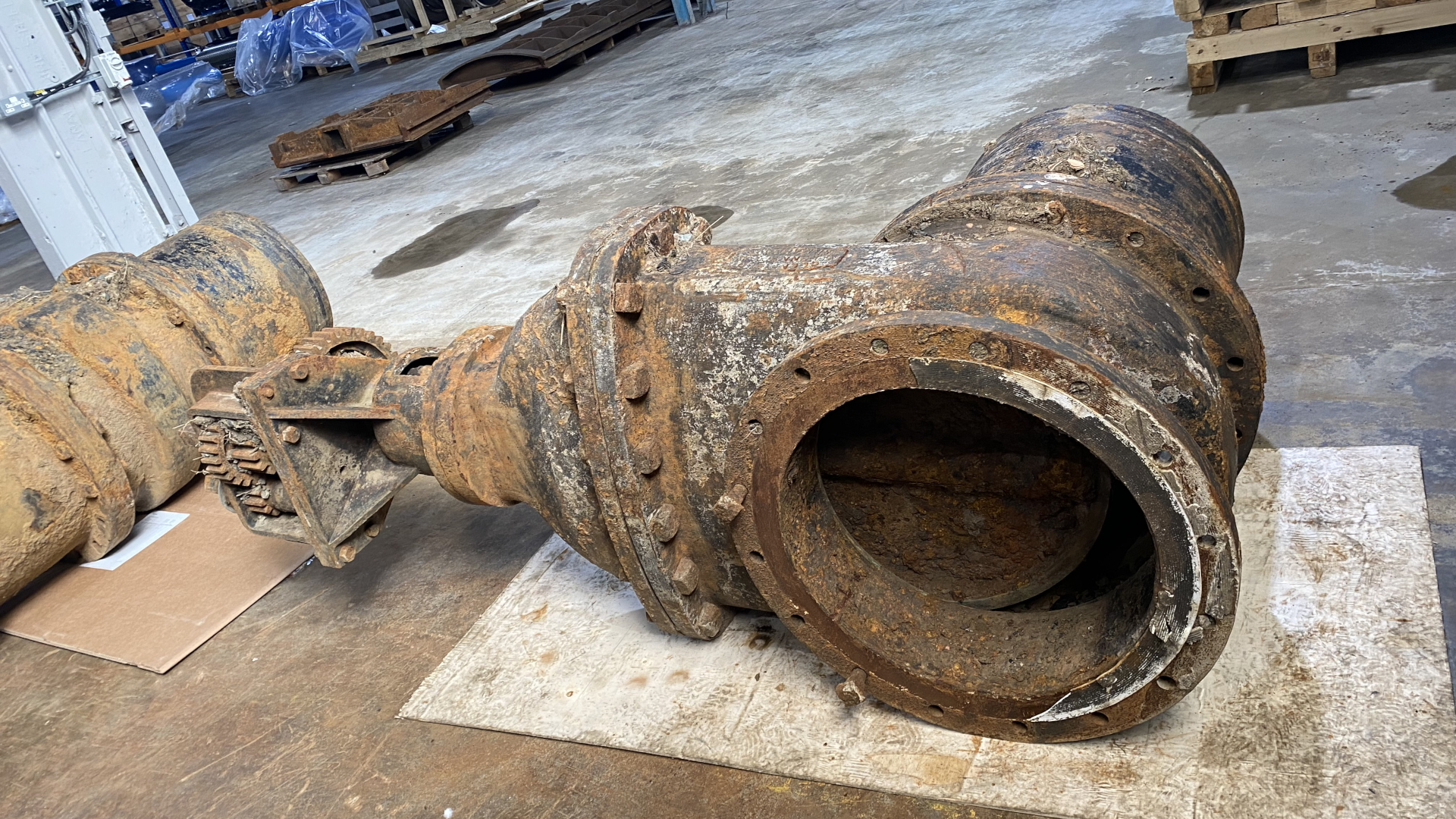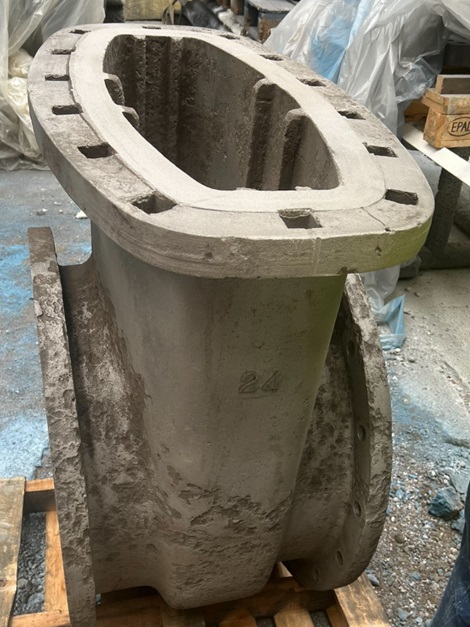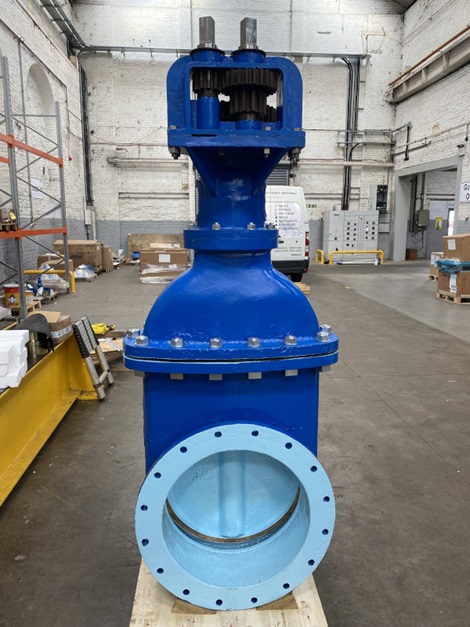
Two gate valves, probably manufactured around 1902, have been removed from the line and placed in a nearby field alongside Munnoch Reservoir in Scotland. The valves were cleaned, disassembled, and all components were subjected to a detailed condition assessment.
Based on the recommendations of the condition assessment report, Scottish Water decided to refurbish the two valves such that they could be returned to service. The condition assessment and refurbishment works were undertaken by Glenfield Invicta’s engineers at the company’s engineering workshops in Kilmarnock.
Benefits of valve refurbishment, when compared to new replacement valves, include considerable carbon emission savings, lower costs, and faster turnaround. Also, returning a refurbished valve to its original location and function ensures the dynamics of the pipework/system configuration remain unchanged.
Probably +100 years of operation
Munnoch Reservoir is a small 0.25 km2 service reservoir located around 50 km southwest of Glasgow. The reservoir was decommissioned in 2008. In 2022, George Leslie, a Scottish Water framework contractor, worked on the site to lower water levels and rewild the surrounding area. The reservoir now acts as a flood prevention measure.
When the conservation works were being undertaken, two DN60 metal seated gate valves were found hidden in dense undergrowth. Although nobody can say for sure, it is possible that the valves were removed when the reservoir was decommissioned in 2008. The original use of the valves is likely to have been scour protection or reservoir drawdown.
Inspecting, refurbishing, and testing
Scottish Water contacted Glenfield Invicta and agreed on a two-phase approach. Firstly, the valves were to be stripped down to their component parts, and subjected to a condition assessment, with Glenfield Invicta submitting a report to Scottish Water containing recommendations on how to best proceed. If, upon analysing the report, refurbishment was the ideal course of action for Scottish Water, Glenfield Invicta was to refurbish the valves so they could return to operational use.
George Leslie transported the valves to Glenfield Invicta’s engineering workshop in Kilmarnock. Before assessment could begin, a substantial amount of mud and soil was carefully removed.
Whilst the valves carried the Glenfield mark, there was no date on the casting to identify when it had been manufactured. However, the flange configuration and the use of coachtype bolts indicated that the valves were probably the originals installed when Munnoch Reservoir was constructed in 1902.
Once cleaned, the valves were disassembled into their component parts which, on visual inspection, seemed to be in good overall condition. A detailed condition assessment was then completed by Glenfield Invicta’s engineers. Scottish Water decided to accept the condition assessment report’s recommendation that the valves and their gearboxes were in a condition which indicated refurbishment was a cost-effective solution.
The refurbishment process took six weeks. Firstly, the valves’ castings were shotblasted and spray coated with consecutive protective layers of paint – the same that is used on our current valve range. Also, the seat rings were cleaned manually.
During reassembly, the original fasteners were replaced with new, as were the non-metallic seals and packing.
The valves’ open top gearbox design was slightly unusual, as it had dual inputs. One shaft had a high ratio teeth setting, whereas the other had a low ratio. This meant the engineer opening or closing the valve could choose which input to use depending on the torque required.
Once the valves had been reassembled, they were hydrostatically tested to ensure the gate bedded correctly and there were no leaks.


Refurbishment can save time, costs, complexity and emissions
There are several benefits when refurbishing valves. The most obvious is of course the sustainability gains that can be achieved through refurbishment rather than procuring new replacement valves. For this project, the refurbishment of the two gate valves will result in a saving of over 4.5 tonnes of CO2 emissions.
Also, significant time and cost savings can be gained through refurbishment. A valve refurbishment project will usually take between four to six weeks, dependent on condition. As each new reservoir valve is bespoke to its intended application, lead times for new valves are typically around 24 weeks.
The cost of refurbishing a valve can be considerably lower than buying a new valve. Furthermore, if a refurbished valve is being returned to its original location and function, the installation is relatively straightforward. For example, there are no flange compatibility issues to resolve as could be the case if a new valve is being fitted into existing pipework. This can make the installation of a refurbished valve quicker and more economical than a new valve.
In engineering terms, a refurbished valve ensures the dynamics of the original pipework configuration/system are not disturbed. It will continue to perform as it was originally designed to.
The Munnoch Reservoir valves refurbishment project clearly shows that even valves that may initially appear to be in a poor physical state are worthy of further investigation.
Next up for the Munnoch Reservoir gate valves
Given the new function of the Munnoch Reservoir as a flood prevention measure, it is unlikely that the refurbished valves will be used on the same site. But there are numerous other reservoirs across the Scottish Power estate that date from the late 1800s and early 1900s. It is possible that the furbished valves will be used as replacements, temporarily or permanently, for other gate valves.
Initially, one fully refurbished valve will be shown alongside another valve that has not been refurbished and this will be displayed at the George Leslie Innovation & Sustainability Day in September 2024.



